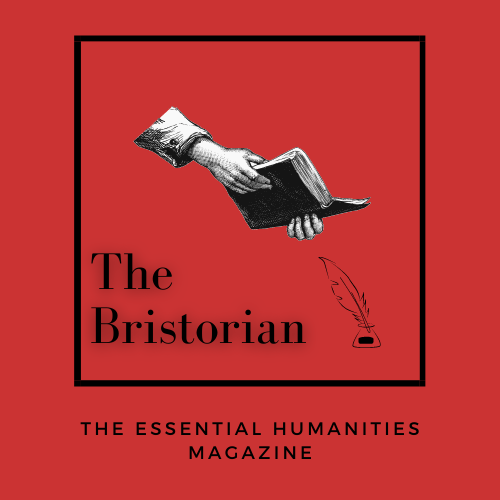Modern Characterisations of Myth
By Tia Sha
[Contains some spoilers]
Figures and archetypes of Ancient Greek myths have spat out constantly in slightly altered states and have been repackaged throughout time; eternal products of their contemporary setting. As a student of classics, I find my mind does wonder about the mythic origins of the media I so constantly consume. This list is curated of personal favourites and correlation to the mythical world, tropes so prevalent that ancient Greek inspiration cannot be escaped.
Saltburn
The proclaimed film of 2023, was not discreet in its rooting in the ancient world. Felix Catton, the lead of the screen, is a charming and entrancing figure who brings upon his demise through his own ignorance. His fall from grace, the consequence of his hubris, earns him the mantle of a tragic hero. I’d argue that he’s not so different from Icarus, having ‘flown too close to the sun’. The film shoots him draped in gold, bathed in sunlight. He is the visual of the sun. The costume party sells his role: his back adorned with golden feather wings, the same pair he wears as he dies.
Oliver Quick functions within the role of the minotaur - a hunger for death and flesh. A statue of the minotaur is found in the centre of the estate’s maze, designed in the image of Oliver, so the body they share is the very same. Neither human nor animal, the minotaur’s hybrid nature represents Oliver’s lack of belonging to a particular world, and the loss of humanity that occurs as a cost of barbarism. The statue that haunts the maze bears witness to Felix’s death, and at this costume party it is Oliver whose head is adorned with horns. His savagery is confirmed and any façade Oliver once performed to the audience is lost in this particular act of murder.
It’s important to note that though the myths of Icarus and the Minotaur are often retold and recited as separate tales, they belong to the same myth. It is the island of Crete where Icarus escapes into the sun with the wings his father Daedalus fashioned. It is Crete where the Minotaur was slaughtered by Theseus, trapped in the Labyrinth which Daedalus designed. It is the threat of the Minotaur within the maze that forces Icarus to flee.
Portrait of a Lady on Fire
Orpheus and Eurydice have retaken the form of a sapphic romance in ‘Portrait of a Lady on Fire’. Marianne is Orpheus to Heloise’s Eurydice. The starkness of this difference is drawn attention to when, alongside Sophie (the housemaid), they are told the myth and have such different perspectives. Marianne is empathetic to Orpheus, excusing his actions: one forgets most things in the face of devastating love. Heloise brings forward the perspective of Eurydice as a hero, sealing her fate when she calls upon Orpheus as a rejection of the role of the silenced woman. Her voice is a resistance.
Contemporary interpretations of the myth have shifted to understanding it as a warning of the dangers of the male gaze. The lack of a man in ‘Portrait of a Lady on Fire’ instead focuses on power imbalances between the two women, depicted as constantly changing positions through alternating gazes upon each other. The myth presents itself through the theme of the unfortunate inevitable, Marianne’s awareness that Heloise can no longer love her. A haunting ghostly image in her wedding dress and the concept that Heloise’s marriage to a man will be the death of her along with their relationship. In the same way, we can assume that Orpheus must have been aware that the dead often leave. Heloise existed only as Marianne’s vision, Marianne supporting the fact that she is choosing to savour the memory of Heloise, just as Orpheus chooses his final glimpse.
Heloise calls “Retourne-toi!” meaning ‘Turn Around!’, which serves as the most clear invocation of the myth. At this point, Marianne and Orpheus choose to immortalise their love through memories, and Heloise and Eurydice succumb to fates that have always been their own.
Yellow Jackets
I find a comparison of every maddened woman to a maenad, a ‘raving woman’ in her cultish worship of Dionysus. ‘Yellowjackets’ is a TV show that is a tapestry woven in threads of myth, the most glaring of which is what feels directly referential to Euripides’ Bacchae. In Bacchae, Dionysus is worshipped through rituals that blur boundaries between civilisation and primal instinct. A football team of girls lost in the woods in 1996 after a plane crash were undoubtedly rather quick to lose elements of civility and succumb to some animalistic tendencies too.
Despite maenads simply being girls and women, they were treated as monsters and as victims throughout the play. Their fusion of humanity and brutality establishes itself through the juxtaposition of girls behaving like animals. Alike maenads, the yellowjackets descend to ritualistic cannibalism which blurs the human and animal - the tragedy of Jackie’s death is followed by a fictionalised feast two months later.
In a replication of a Bacchanalia - goblets of wine and candles decorate the table; the girls are dressed in white togas and gowns with golden wreath headpieces, an omen to the Olympians; and Jackie’s corpse sits elevated above it all. Their cannibalism is reframed as almost a religious act rather than a brute one. The Greek feast scene is cut between their reality of winter, in which they devour Jackie’s corpse in a frenzy, comparable to the scene of Pentheus being torn apart in Bacchae, the cuts to the divinity representing the maenads' skewed vision of what they thought was happening. They roam the forest, drinking wine, hunting animals and wearing their fur skins, the visual imagery of women in the wild invoking the bacchants as the first unruly women.
We will always find Greek mythology in our modern mediums for they resonate the same way they would have done then; setting out the natural causes of personality and humanity.

